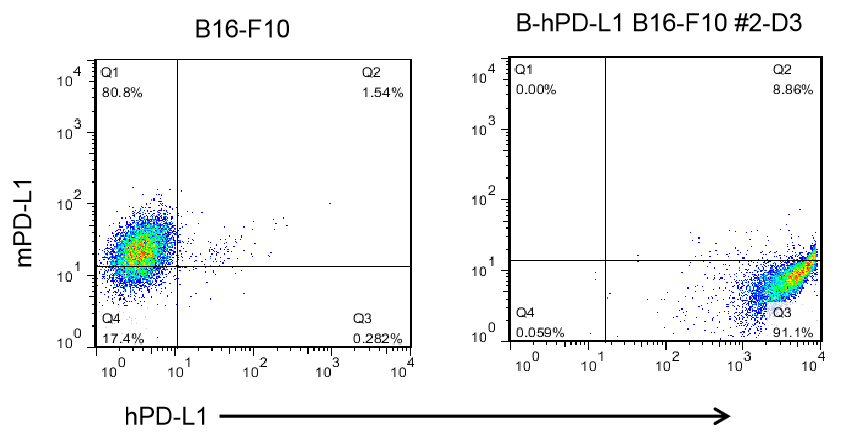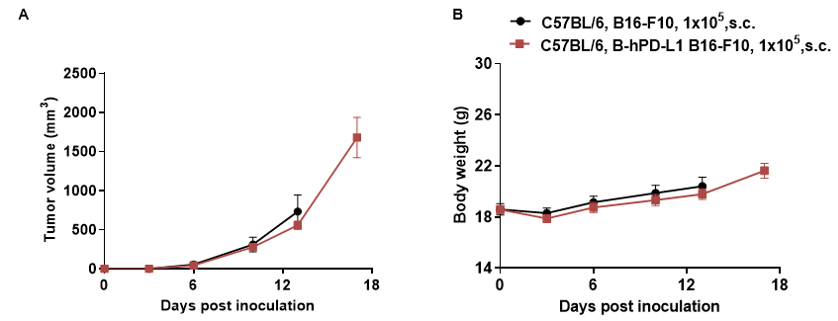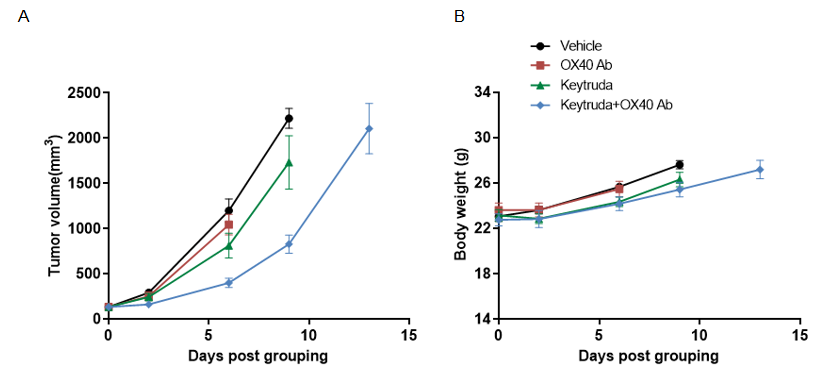|
Common name |
B-hPD-L1 B16-F10 | Catalog number |
310687 |
| Aliases | CD274, PDCD1L1 | Disease | Melanoma |
|
Organism |
Mouse |
Strain | C57BL/6 |
| Tissue types | Skin | Tissue | Skin |
Description
The mouse Pdl1 gene was replaced by human PD-L1 coding sequence in B-hPD-L1 B16-F10 cells. Human PD-L1 is highly expressed on the surface of B-hPD-L1 B16-F10 cells.
Application
B-hPD-L1 B16-F10 cells have the capability to establish tumors in vivo and can be used for efficacy studies.
The exogenous promoter and human PD-L1 coding sequence was inserted to replace part of murine exon 3. The insertion disrupts the endogenous murine Pdl1 gene, resulting in a non-functional transcript.
Protein expression analysis

PD-L1 expression analysis in B-hPD-L1 B16-F10 cells by flow cytometry. Single cell suspensions from wild-type B16-F10 and B-hPD-L1 B16-F10 cultures were stained with species-specific anti-PD-L1 antibody. Human PD-L1 was detected on the surface of B-hPD-L1 B16-F10 cells but not wild-type B16-F10 cells. The 2-D3 clone of B-hPD-L1 B16-F10 cells was used for in vivo experiments.
Tumor growth curve & Body weight changes

Subcutaneous homograft tumor growth of B-hPD-L1 B16-F10 cells. Wild-type B16-F10 and B-hPD-L1 B16-F10 cells (1x105) were subcutaneously implanted into C57BL/6 mice (female, 5-8-week-old, n=5). Tumor volume and body weight were measured twice a week. (A) Average tumor volume ± SEM. (B) Body weight (Mean± SEM). Volume was expressed in mm3 using the formula: V=0.5 X long diameter X short diameter2. As shown in panel A, B-hPD-L1 B16-F10 cells were able to establish tumors in vivo and can be used for efficacy studies.
PD-1 Ab (Keytruda) combined with OX40 Ab efficacy evaluation












